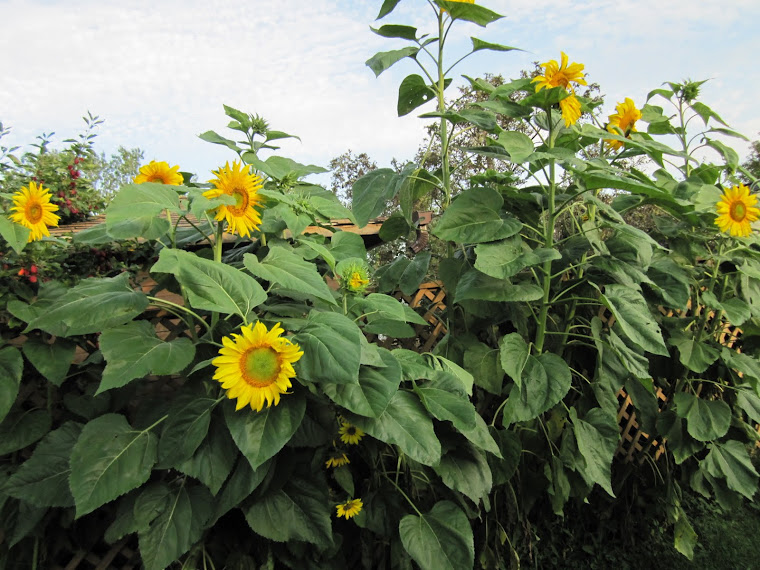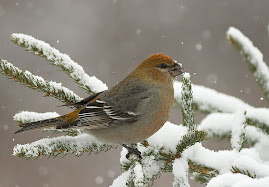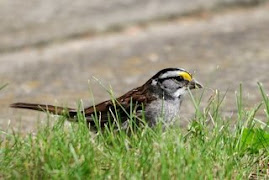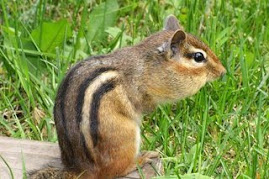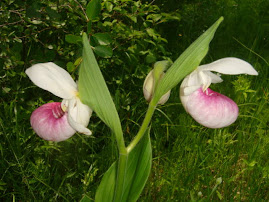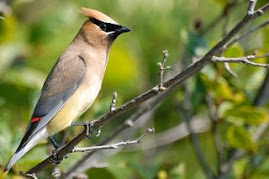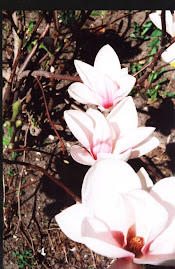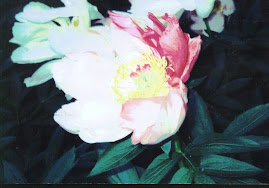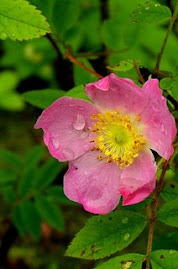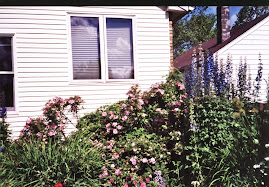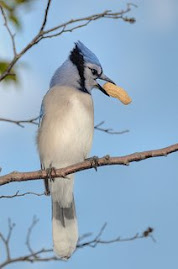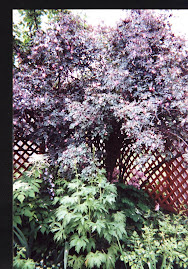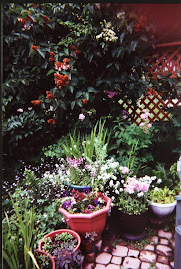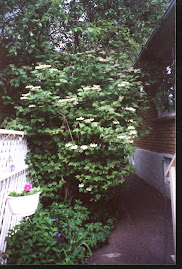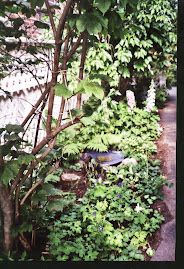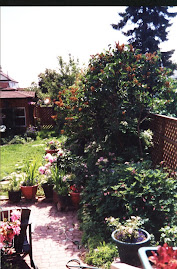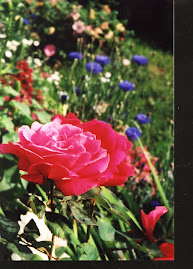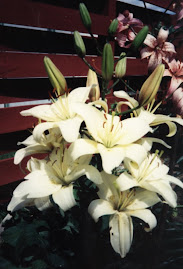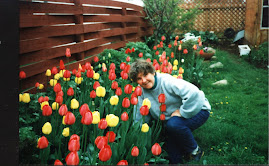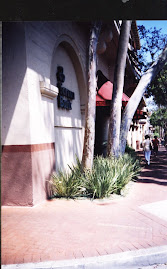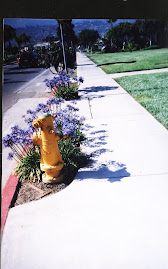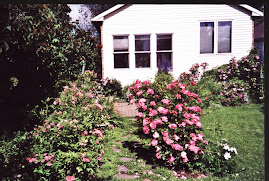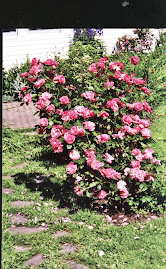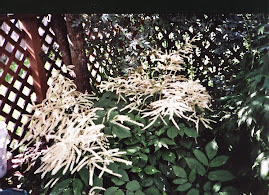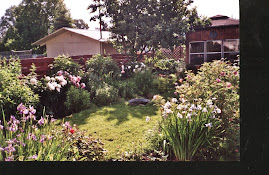Just when the garden is sinking into winter and looking a bit bleak, along comes the first seed catalogue. TandT, a reliable Manitoba grower, first off the mark.
I get several catalogues and I have ordered from many but in the last few years I found all the seeds I need in Stokes and T&T. Stokes is so detailed and gives such good growing information that it is a must for anyone starting seeds inside. T&T provides the Manitoba favourites and if it grows in Winnipeg, it can grow here.
Most seed catalogues start with new introductions. For instance this year T&T offers a frilly petunia, a white egg plant, a striped morning glory and so on. I pay little attention to this section. These plants are for those gardeners who are interested in novelty. Many of these newcomers are never seen in subsequent editions of the catalogue and one wonders just how successful they were for the average home grower.
I seldom order plants from catalogues. I prefer to use the local nurseries and see the plant before I buy.
So what do I look for? Every garden is in flux; every garden changes from year to year. Each year I see new ideas, seeds to try for new conditions. Next year I want more sweet peas, more sunflowers and shorter lilies for border. I'd like to try ferns in the increasing shade of the side garden. I want to switch to a different variety of squash. In the past I grew Swiss chard and I'd like to grow it again. I have increased the size of the front garden bed and have no idea what to put in it yet.
And above all, I love looking at the pictures and dreaming of another season.
Tip. The loop weeder is the greatest garden tool for saving your back. It is just a loop of metal at the end of a long pole. No more bending, kneeling and hand digging weeds. Just swipe into the soil, chomp the weed and leave it where it lies. It is much more efficient and easy than a hoe. A great gift for elderly gardners.
Friday, 21 November 2008
Wednesday, 19 November 2008
Cue the snow, cue the storm, cue the howling winds
Now that our gardens are slipping under the snow, it is a good time to take stock of the past year.
I congratulate myself on reaching November without a garden injury this year -no bursitis, no bad back, no pulled muscles. In the past, I have not been so lucky.
This year I was determined to limit my garden tasks and only work at each for no more than twenty minutes. Easy to say but when you work in a garden, time changes its character. It falls away and loses all meaning. You are always in the present so time does not move along at a normal pace. And there is always is the temptation to do a little bit more.
But this year I bought a garden clock, an item I believe is a necessity to preserve the health of gardeners. I limited myself to twenty minutes per task and the clock, way up on the wall of the garden shed, monitored the minutes. I suppose a kitchen timer would work just as well.
Dr. Charles Bryan, a local chiropractor, who has seen a fair number of gardeners' aching backs and repetitive strain injurues, says the first rule of gardening is to put a limit on each task. Gardening is an athletic endevour he says and just as most of us cannot run for hours so we cannot garden for hours.
Garden clocks or exterior clocks showed up in garden centres two years ago. At first they were expensive but the price dropped this year. My clock is made of scrolly iron work and takes two A batteries. I think it is an attractive garden feature.
I congratulate myself on reaching November without a garden injury this year -no bursitis, no bad back, no pulled muscles. In the past, I have not been so lucky.
This year I was determined to limit my garden tasks and only work at each for no more than twenty minutes. Easy to say but when you work in a garden, time changes its character. It falls away and loses all meaning. You are always in the present so time does not move along at a normal pace. And there is always is the temptation to do a little bit more.
But this year I bought a garden clock, an item I believe is a necessity to preserve the health of gardeners. I limited myself to twenty minutes per task and the clock, way up on the wall of the garden shed, monitored the minutes. I suppose a kitchen timer would work just as well.
Dr. Charles Bryan, a local chiropractor, who has seen a fair number of gardeners' aching backs and repetitive strain injurues, says the first rule of gardening is to put a limit on each task. Gardening is an athletic endevour he says and just as most of us cannot run for hours so we cannot garden for hours.
Garden clocks or exterior clocks showed up in garden centres two years ago. At first they were expensive but the price dropped this year. My clock is made of scrolly iron work and takes two A batteries. I think it is an attractive garden feature.
Sunday, 16 November 2008
The snowless area
Snow to the east and snow to the west but nothing to speak of in Thunder Bay. Deep grey clouds sail over but no drama. A friend, a long time resident, says she can smell approching snow but she does not smell it yet. She says there is a hush, as if the trees were holding their breath, but she has not tuned into this either.
I make a trip out to Vanderweese to look at the wonderful Christmas displays. I am also hoping to find dwarf ameryllis but no luck. I note their bulbs run from 13$ up, at least five dollars more expensive for similar bulbs in the supermarket.
At home I put out water for the birds and every day I thaw ice in the big plastic plant saucer with a kettle of hot water. The birds are on the hunt for water these days as the usual supplu slowly freezes over. Several years ago I bought a bird bath heater but it did not work well in deep cold. I will use the kettle method until the big freeze sets in.
A downy woodpecker, which I have seen in this urban neighbourhood before, shows up for some suet cake. She is a female, as shown by the lack of the red spot on the back of the head. The downy is the most common woodpecker found in the city. This small upright black and white bird sometimes gives a high squeaking call.
A gang of starlings are eating the crab apples. Darn! I was hoping to attract cedar waxwings but no, the short tailed speckled guys with their long bills are stripping the fruit now that the frost has softened it.
On the patio, the juncos look like sparrows dressed in tuxedos. They are black with a white tummy and when they fly you can see their natty white outer tail feathers. Sometimes they give a funny little hop. They also make clicking noises, probably to keep in touch with each other.
I make a trip out to Vanderweese to look at the wonderful Christmas displays. I am also hoping to find dwarf ameryllis but no luck. I note their bulbs run from 13$ up, at least five dollars more expensive for similar bulbs in the supermarket.
At home I put out water for the birds and every day I thaw ice in the big plastic plant saucer with a kettle of hot water. The birds are on the hunt for water these days as the usual supplu slowly freezes over. Several years ago I bought a bird bath heater but it did not work well in deep cold. I will use the kettle method until the big freeze sets in.
A downy woodpecker, which I have seen in this urban neighbourhood before, shows up for some suet cake. She is a female, as shown by the lack of the red spot on the back of the head. The downy is the most common woodpecker found in the city. This small upright black and white bird sometimes gives a high squeaking call.
A gang of starlings are eating the crab apples. Darn! I was hoping to attract cedar waxwings but no, the short tailed speckled guys with their long bills are stripping the fruit now that the frost has softened it.
On the patio, the juncos look like sparrows dressed in tuxedos. They are black with a white tummy and when they fly you can see their natty white outer tail feathers. Sometimes they give a funny little hop. They also make clicking noises, probably to keep in touch with each other.
Sunday, 9 November 2008
snow, lovely snow
A light snow is sifting down. The juncos leave birdy tracks on the patio where they are feasting on black oil sunflower seeds. The resident chickadee pecks at the bird cake in its holder. The grey squirrel arrives to steal what it can.
The garden is settling into winter. The gardener is still washing pots inside. She had a pleasant gift this week, ten big plastic bags full of leaves. She drags them to the compost and empties several over the remaining pile and turns out one bag over the daphne bush, a tender plant still holding on to its variegated leaves.
But in the back garden all leaves are fallen. Only a few berries remain on the high bush cranberry and nothing on the mountain ash. The lamium, alive yesterday, is frozen today. In front, the mullein still blooms in the sharp wind and blowing snow. It must be the world's toughest plant. It has been blooming since August.
I should have brought the hose in earlier, thinks the gardener, struggling with a frozen 100 feet of ice.
Now is the time to plant the indoor bulbs. The amarylis have arrived at Vanderweese and other stores. Nothing is more cheery in the winter than this marvelous indoor flower. Every child in Thunder Bay should have an amarylis to plant and watch it stretch into bloom.
The garden is settling into winter. The gardener is still washing pots inside. She had a pleasant gift this week, ten big plastic bags full of leaves. She drags them to the compost and empties several over the remaining pile and turns out one bag over the daphne bush, a tender plant still holding on to its variegated leaves.
But in the back garden all leaves are fallen. Only a few berries remain on the high bush cranberry and nothing on the mountain ash. The lamium, alive yesterday, is frozen today. In front, the mullein still blooms in the sharp wind and blowing snow. It must be the world's toughest plant. It has been blooming since August.
I should have brought the hose in earlier, thinks the gardener, struggling with a frozen 100 feet of ice.
Now is the time to plant the indoor bulbs. The amarylis have arrived at Vanderweese and other stores. Nothing is more cheery in the winter than this marvelous indoor flower. Every child in Thunder Bay should have an amarylis to plant and watch it stretch into bloom.
Monday, 3 November 2008
High Park Toronto
Some years ago, the decision was made to change Toronto's High Park from a typical urban manicured space into an ecological wilderness. What a delight it is. From downtown you take the Queen Street East street car to Park Drive. You can walk the trails around Grenedier Pond and up to the restaurant where you can get a nice hot chocolate. Native trees and plants attract plenty of birds: ducks, trumpeter swams, cormorants, Canada geese on the ponds and gold finches, sparrows and late warblers in the trees. There is also a small zoo hidden in there somewhere. Thunder Bay has few oak trees but here there are many. In October they are a deep copper colour, beautiful alongside the bright red maples.
Even in late October Toronto gardens are interesting. A few roses bloom on. Many small downtown front yards have eschewed lawn for rock/plant/shrub compositions. I saw plenty of lamium and lots of spreading allysum.
Even in late October Toronto gardens are interesting. A few roses bloom on. Many small downtown front yards have eschewed lawn for rock/plant/shrub compositions. I saw plenty of lamium and lots of spreading allysum.
Subscribe to:
Comments (Atom)

